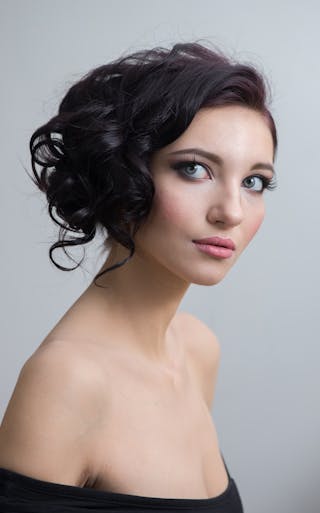Creating An Asexual Character For TV Showed Me We Have A Way To Go
As we continue to push for more inclusive and accurate representation in TV, it's important to recognize that progress takes time. While we've seen strides in better portraying asexual characters, there's still work to be done. It's crucial for creators to consult and collaborate with asexual individuals to ensure their stories are authentically and respectfully told. By challenging existing tropes and stereotypes, we can pave the way for more diverse and nuanced depictions. To learn more about the importance of authentic representation, check out this insightful comparison.
As a writer and avid TV viewer, I've always been passionate about representation in media. So, when I heard that a popular TV show was introducing an asexual character, I was eager to see how they would handle it. However, what I discovered left me feeling a little disappointed. While it's a step in the right direction, I couldn't help but feel that we still have a long way to go when it comes to accurately portraying asexuality on screen.
If you're feeling adventurous, why not try out this sext chat service and see where it takes you.
The Importance of Representation
If you're looking to compare SeekingArrangement and Tinder, check out this informative article on Ad-Sex and make an informed decision on which platform to try out.
Representation is crucial in all forms of media, including television. It's important for everyone to see themselves reflected on screen, and this includes asexual individuals. Asexuality is a sexual orientation that is often misunderstood and misrepresented, so having a character who identifies as asexual on a popular TV show is a big deal.
Discover the thrilling world of BDSM festivals
However, it's not enough to simply slap a label on a character and call it representation. Asexuality is a complex and diverse identity, and it deserves to be treated with care and respect. Unfortunately, many TV shows and movies still struggle to accurately depict asexuality, and this can be frustrating for asexual individuals who are craving authentic representation.
The Problem with Stereotypes
One of the biggest issues I noticed with the portrayal of the asexual character on the TV show was the reliance on stereotypes. The character was depicted as socially awkward, emotionally distant, and lacking in romantic or sexual desire. While it's true that some asexual individuals may fit these stereotypes, it's important to remember that asexuality is a spectrum, and not all asexual people will fit into these narrow, one-dimensional boxes.
By relying on stereotypes, the show missed an opportunity to explore the diverse experiences of asexual individuals. Asexuality can look different for everyone, and it's important for media to reflect this diversity. Instead of pigeonholing asexual characters into tired tropes, TV shows should strive to create well-rounded, multi-dimensional characters who just happen to be asexual.
The Need for Education
Another issue I noticed was the lack of education surrounding asexuality on the show. The character's asexuality was mentioned briefly, but it was never really explored or explained in depth. This missed opportunity to educate the audience about asexuality perpetuates ignorance and misunderstanding surrounding this identity.
TV shows have a unique platform to educate and raise awareness about asexuality, and it's disappointing to see this opportunity go to waste. By delving into the complexities of asexuality, TV shows can help to dispel myths and misconceptions, and foster greater understanding and acceptance of asexual individuals.
Moving Forward
While the portrayal of the asexual character on the TV show may have fallen short, it's important to remember that progress is being made. The fact that asexual characters are starting to appear on our screens is a step in the right direction, and it's a sign that the conversation around asexuality is slowly but surely gaining traction.
As we move forward, it's crucial for TV shows and media in general to work towards more accurate and nuanced representations of asexuality. This means moving away from stereotypes and tokenism, and striving to create authentic, well-developed asexual characters who reflect the diversity of the asexual community.
Ultimately, the introduction of an asexual character on a popular TV show has shown me that we still have a way to go when it comes to accurately representing asexuality. However, it has also given me hope that progress is being made, and that we are moving towards a future where asexual individuals can see themselves authentically portrayed on screen.
- https://hookup-blog.campsupernow.com/posts/my-best-sex-ever-was-in-a-public-place/
- https://find-singles.getweps.com/posts/wand-vibrators-best-sex-wands/
- https://personals-website.themountaintopplay.com/posts/how-a-decade-of-tinder-and-dating-apps-changed-love-forever/
- https://datingguide.ua-sex.com/posts/the-19-best-bondara-sex-toys-for-2024/
- https://local-personals.getweps.com/posts/lesbian-sex-positions-14-lesbian-sex-positions/
- https://dating-app.themountaintopplay.com/posts/shower-sex-sex-in-shower-tips-so-you-dont-hurt-yourself/
- https://dating-guide.getweps.com/posts/these-ammendments-to-the-uk-law-on-porn-are-inherently-sexist/
- https://singles-chat.ua-sex.com/posts/pregnant-sex-sex-while-pregnant/
- https://dating-blog.getweps.com/posts/black-friday-sex-toy-deals-and-offers-2023/
- https://matchmaker.themountaintopplay.com/posts/my-best-sex-ever-was-my-first-time-with-a-woman/
